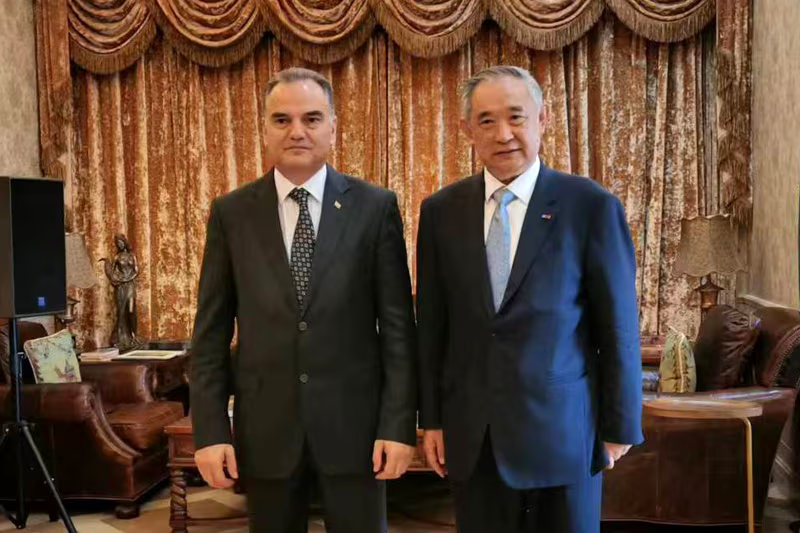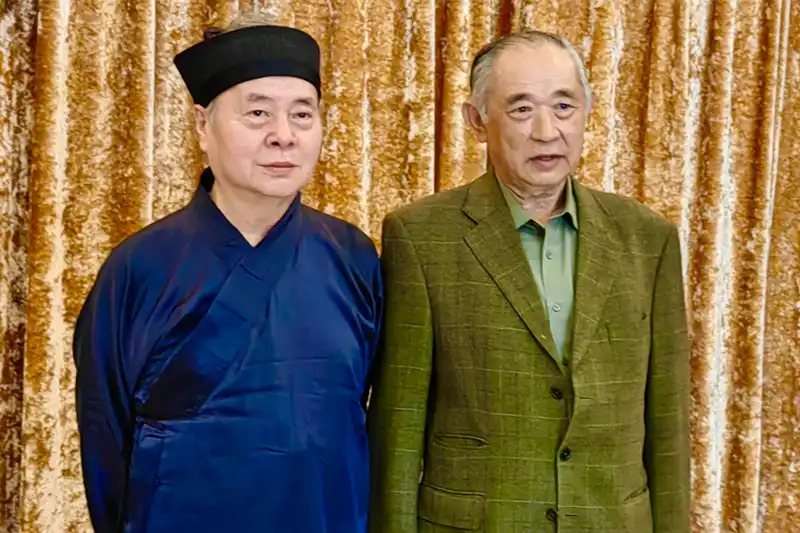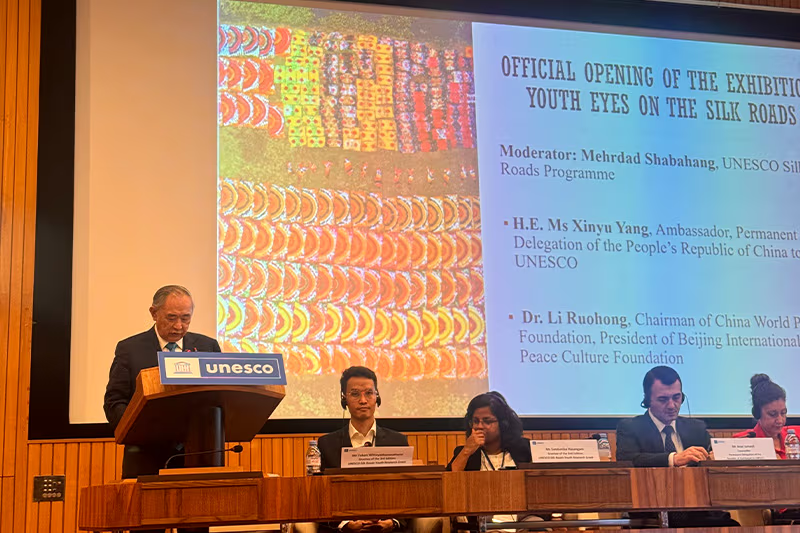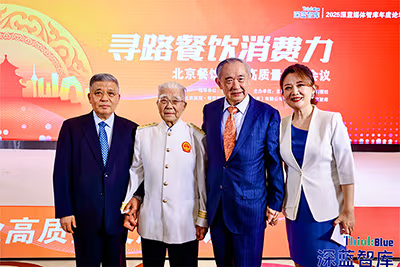
On 19 September, the thematic webinar "Art and Sustainable Development", an online art exchange to commemorate the 75th anniversary of the founding of the United Nations, was successfully held. Vice President of the Chinese Federation of Arts and Cultures, President of the Chinese Musicians Association Mr. Ye Xiaogang, Director General of the China International Publishing Group Du Zhanyuan, Ms. Olga Algayerowa, Executive Secretary of the United Nations Economic Commission for Europe , Mr. Han Ziyong, President of the Chinese Academy of Arts, Mr. Feng Shuangbai, President of the Chinese Dancers Association, Mr. Roger Brown, President of the Academy of Music in Berkeley, Mr. Zou Zhirui, Secretary General of the International Ballet Education Union, Ms. Kristina Hoyos, Spanish National Treasure Flamenco Artist, Ms. Hanks Kaisner, President of the New England Academy of Music, Mr. Han Qunli, Former Secretary-General of UNESCO's Human & Biosphere Programme, Ms. Angelica Schroeder, Dean of the Namibian Academy of Arts, Mr. Benjamin Woodroffe, President of the Global Performing Arts Foundation, Ms. Sa Dingding, Renowned Musician & Dancer, and Mr. Yan Haiping, Director of the World Institute of Literature and Culture of Tsinghua University, expressed their views on how to promote the integration of the concept of art and sustainable development, build a platform for cooperation between sustainable art and all sectors of society, and make art an important force for sustainable development.
Dr. Li Ruhong, UNESCO's representative of Interactive Atlas of Cultural Interactions Along Silk Roads and President of the China World Peace Foundation, attended the seminar and delivered a video presentation, the full text of which is as follows:
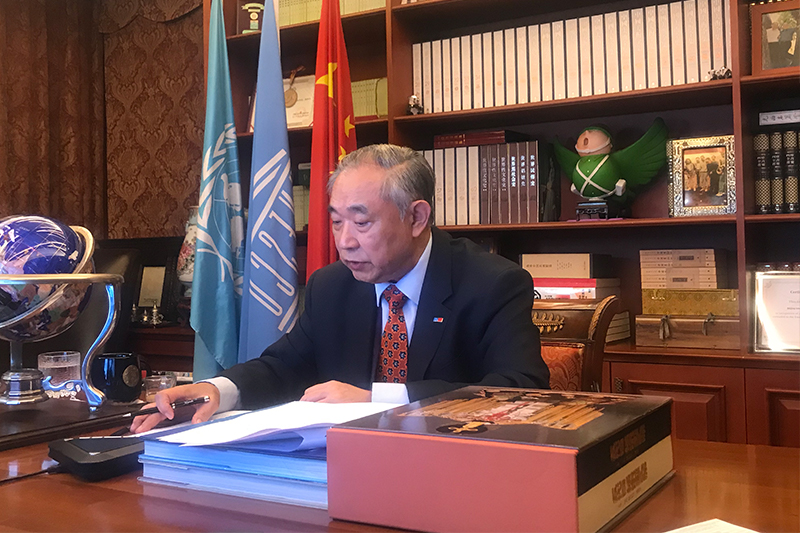
This year marks the 75th anniversary of the United Nations and UNESCO, and we hereby present our congratulations!
In the era of global integration, the exchange and interaction of art and culture among the people of the world has developed rapidly. Regrettably, the spread of the pandemic and the expansion of unilateralism in 2020 have had an impact on the cross-civilization cooperation of the international community, and due to different histories & political systems, cultural differences, unbalanced economic development and trade barriers, exchanges in various regions and countries in various fields such as humanities, art, finance, science and technology have been hindered, and even cold war memories have resurfaced.
"Sustainable Development with Art and Culture" is a major topic, including political, economic, social, scientific and technological, educational and other cultural ecosystems. Historical progress has taught us that the development of culture and art requires market and dissemination, and closure only distorts values. People, their livelihood and cultural diversity, globalization consist the two sides of a coin, only "harmony with differences", can enable us to understand the past history of cultural heritage, discover the current resources, strengthen the unity of the cultural and artistic circles, in the protection of world heritage and the succession of intangible cultural heritage to correct prejudice and reduce differences through artistic ideas, language, dance, the environment to express kindness and charm, share and create the dividends of peace.
In 2017, UNESCO and the World Peace Foundation of China jointly initiated the Project of Interactive Atlas of Cultural Interactions Along the Silk Roads, which aims to foster among countries a "community of shared destiny" for peace and culture, and promote cultural interactions in global governance and to preserve an open, safe and non-discriminatory cultural and artistic environment. It covers the entire geographical scope of the Silk Roads and has inclusive connotations, including science and technology, music and art, fashion and accessories, medication and pharmacy, language and literature, traditional games and sports, fine food and agriculture, myths and fantasies, religion and spirituality, ritual and celebration. And through modern information technology to further enhance peace and cultural dialogue, played a platform and link role for the friendly exchanges between people of all countries , just like what Mr. Antonio Guterres, Secretary General of UN has said, this is a special present to the world.
How to pass on traditional culture and develop modern civilization? How to help the former "slavery route" country? How can post-war countries get the support needed in rebuilding their homes and assisting less developed and vulnerable groups through innovative models of education, science and culture? How to transcend race and provide young people space to enhance cultural core values and soft power? How can we promote the optimization of global governance structures through South-South and North-South cooperation and mitigate regional conflicts with the global approach of multilateralism? How to promote cultural exchanges between friendly cities and communities in various countries, so that cultural business cards become the coordinates of friendship? Over the years, our successful practices in different countries and regions have won the respect and wide acclaim of the international community.
In nowadays society, due to regional and ethnic differences, the content of art and its expression in the East and the West are developed based on their own historical and cultural background. Although the forms of artistic creation are different, the artistic language is without boundary and the artistic emotions are common.
With the rapid development of science and technology, information technology and intelligence are boosting the sharing of culture and art, cultural added value and cultural entertainment digital products have become the hot spots of economic transformation. This requires us to not only focus on the domestic market, but also based on the international market, to choose an open innovation and international development path in the two markets and dual cycle.
In the area of art education, we advocate to expand the popularization of young people's art education through online and offline, domestic and international linkage and other forms and to cultivate their artistic intuition. Just as the "Interactive Atlas of Cultural Interactions Along the Silk Roads" has provided the international community with a wealth of knowledge and services, the "Peace 1" concept has also improved communication and trust and cooperation, and has led to the development of related industries. Our two consecutive "Silk Road in the Youth Eyes" Global Photo Contests and Exhibitions with UNESCO are the perfect opportunity for young people around the world to capture and understand the common heritage of the Silk Roads through their cameras. Our museum also regularly host cultural and artistic exhibitions and events to promote intangible cultural heritage and world heritage.
The exchange and mutual learning of culture, art and the study of creativity are important contents of the cause of world peace and development, which is not only the embodiment of friendly achievements, but also the driving force of sustainable development. Cultural cooperation between countries and regions has injected new vitality into the understanding of contradiction and rebalance. We believe that life has various joys, and only by sticking to the path of "Peace + 1" can we revitalize our inner passion through warm, down to earth, sustainable cultural public welfare projects and unforgettable stories. The connotation and significance of cultural road and peace public welfare have positive guiding power and influence on people's understanding of the world, innovation and development. We are willing to work with you to promote the excellent culture and folklore of all the nations of the world for the benefit of mankind and to let peace smile. Thank you.
